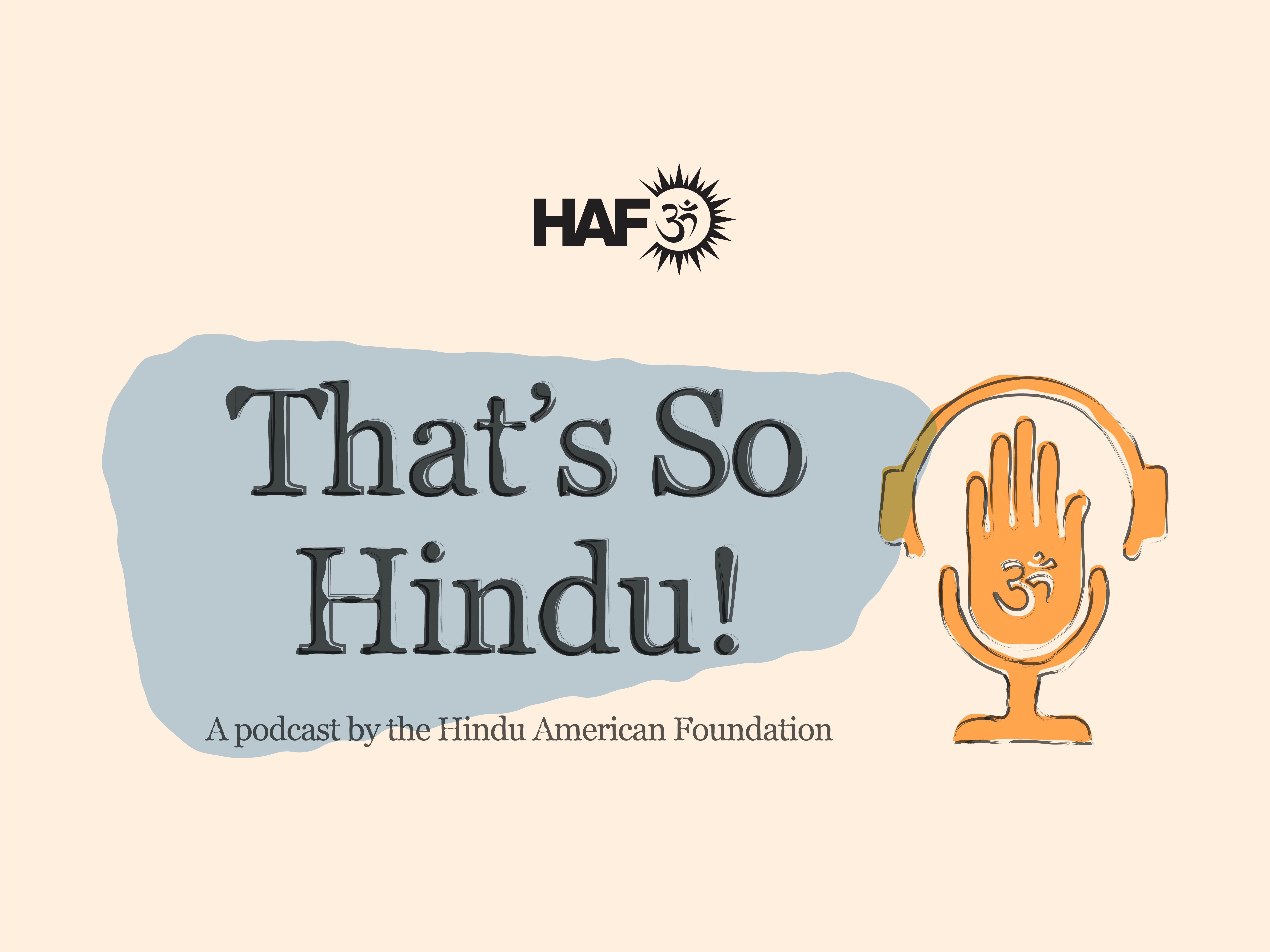

Image: Alpha Photo
Our children may be part of the so-called Anxious Generation but age-old principles can help relieve them
As a Hindu Indian American psychologist mom of 2 toddlers, aged 4 and 2, I often wonder what the biggest threats to their well being are, convincing myself (not entirely incorrectly) that if I can predict them, I can address them. While they’re blessed with more stability and security than any generation before them, the challenges they will face are also new and challenging.
In spite of unprecedented access to mental health care, an immense crisis of depression and anxiety is afflicting their peers. As third generation Hindu Americans, the success our community has achieved may create immense pressure. In addition, they’ll have to keep navigating a digital world, where we’re increasingly seeing that the social media they’ll use is literally designed to erode their well being to facilitate addiction.
Thankfully, I think that age-old Hindu teachings and practices are still well equipped to inoculate them.
So much has been written about how afflicted Gen Z and Gen Alpha already are. They suffer from higher rates of depression and anxiety; they are embattled by climate anxiety; they’re showing less autonomy at older ages than any before them, whether it’s in the age at which they get their driving license, move out of their parents home, or get married. Even things that we would expect to celebrate, such as their lower rates of DUIs, teen pregnancies, and arrests, invite the consternation that these things are only true because they’re spending unprecedented amounts of time isolated at home absorbed in digital lives.
Jonathan Haidt, the author of The Anxious Generation: How the Great Rewiring of Childhood Is Causing an Epidemic of Mental Illness, offers a clear diagnosis and a straightforward cure that I think Hindu American parents are well suited to understand and apply.
Haidt posits that as American parents have moved away from giving their children early autonomy, they’ve also encountered a society that’s increasingly become insular and disconnected, and both of these things have fed into each other. We don’t let our kids ride their bikes outside alone because we don’t have the implicit trust that our neighbors will call us if something is wrong, and then we never meet our neighbors to build the trust, and we all stay inside behind the “safety” of our devices.
Tapping into spirituality can connect us to something beyond ourselves
Though Haidt is a self-professed atheist, he shares that tapping into religion and spirituality is a possible way to start reversing the harms of this insulation. He speaks powerfully about how we’ve evolved with god-sized holes in our hearts, and whether we believe that’s because God has designed us this way or because its evolutionary sound to be drawn to spiritual experiences that help us zoom out of ourselves to connect to something greater, including our communities.
Our opportunity is to see that we can give our children a strong grounding in a Hindu teachings that help them see all beings as connected and divine, and the necessity of transcending the experience of ourselves and our egos to feel that connection. We can do this by teaching them this concept directly – we are Hindu, and we believe that every sentient being is divine and connected. We can also reinforce this with so many conversations, whether we’re explaining why we compost, how karma works, why we’ve chosen the diet’s we have, chatting about why we treat everyone with respect and kindness, or in doing sewa (service) together to model what a life grounded in this philosophy truly looks like. We can take the onus on ourselves to make sure that we’re part of communities that are willing to be villages to our kids. By fostering connections and passions in the present, we will help our kids to see the difference they can make when they’re not scrolling.
Abigail Shrier, in her controversial book Bad Therapy: Why the Kids Aren’t Growing Up, also tries to answer the why to the epidemic of anxiety and depression that we’re seeing. She articulates one idea that may feel intuitively true to many children of immigrants: there is a resilience that comes from being able to genuinely ignore and let go of minor annoyances and triggers. The Hindu Dharmas, and their many practices designed around transcending emotion, give us an opportunity to teach our children to do so too. We can teach our young ones about meditation, even if we’re starting with simple deep breaths, we can show them that puja, with its requirement of using all five senses is incredibly grounding, and we can model how we ourselves discern between that which we need to address and that which we choose to ignore.
Of course, there’s a danger of taking the idea of learning to detach from certain emotions in the name of collective good too seriously. How many generations before us have suffered from the physiological symptoms of stress, sadness, and trauma that they’ve been unwilling to unpack? Whether it’s the girls who have been told to ignore sexual abuse because their experience comes at the hands of a family elder, the patriarchs who haven’t been able to share their immense financial distress with family, or the grandparents who haven’t been able to talk about the atrocities they survived due to their guilt that it ever happened, we’ve also spent too long lionizing the idea that strength comes from silence.
We can hold that something about how we’re approaching modern parenting feels off, while acknowledging that a more open attitude to sharing and processing our feelings has immense benefits.
There’s a balance to be had in how we process our feelings, and striking it appropriately may entail some failed attempts that veer towards both extremes — too detached or too attached. Perhaps the conversation Haidt has sparked shows that we’re in a moment where we’re already moving back to the reasonable and intuitive middle.
Overly high expectations from parents can push kids too far
That said, in many ways, the greatest danger to Hindu American kids — amongst the highest achieving by so many metrics — is less likely to be the low expectations that both Haidt and Shrier worry are afflicting our children, but rather the pressure of high expectations and an American culture that pushes our children to constantly be their own harshest critic.
Even as these expectations have pushed too many of our children too far, the potential salve is the same as for the stifling of low expectations: to feel grounded in our connected divinity, to learn to step out of our anxiety prone minds. We can learn to use spirituality to understand our dharma, give ourselves grace, and find fulfillment and joy outside of the academic and fiscal achievements that create the internalized hunger and fleeting chase for only the material that is hurting so many of our kids, and honestly, ourselves.
In addition to the tips above about building community and finding Hindu ways to process our emotions, we must check in with ourselves about how we’re moving towards our svadharma, and how we’re teaching our kids our itihasas (the Mahabharat, the Ramayan, even Panchatantra stories) in order to understand their own as well, as they understand their duty to their body and its well being as well as what they want to do for the society they live in. Whether it’s understanding that Arjuna dealt with the weight of expectations sitting on him by letting go, appreciating that Kaikai’s attachment to power and material things destroyed her relationships, or that a friend in need is a friend indeed via the tale of the elephant and the mouse, our stories have so many ways of teaching our children to think for themselves in any given situation.
Social media at too young an age is a recipe for mental health issues
Thinking about how honest the progenitors of social media have been about their intent to successfully take more and more of our intention, with things like endless scrolling and the like button, while insisting that there are positive benefits of social media, brings to mind the photo of the leaders of the tobacco industry with their hands on their hearts as they pledged to Congress that the products they were selling weren’t dangerous or addictive.
While we respect the ability of adults to gauge the costs and benefits of indulging in a cigarette or an alcoholic drink, I think that Haidt is right that we will look back in horror at the ease with which we allowed social media into the hands of children and adolescents who are absolutely unequipped to be able to protect themselves from technology with such profound power to harm their growing brains and developing power of attention, their ability to connect meaningfully and vulnerably with peers, and their ability to transcend their selves.
The solution Haidt pushes us to accept widely and with collective power, is to keep our children off of social media as long as it is possible, and to allow them to have as much experience with real world interactions as possible. Hindu culture reminds us we can do this and more. We can remember that we must model, not preach, the behavior we want our children to embrace.
The digital world is full of even more maya than our physical world, and all the lessons of Hindu sources of knowledge to learn how to discern real truth push us to teach our kids to see that perceptions of a social media-verse are inherently flawed, and designed to make us forget our true selves and our true purposes.
The challenges to Hindu American parents in 2024 are unique. However, the Hindu Dharmas, in their ancient yet forever applicable nature, give us the tools to guide our children, and modern psychological science has come to see the profound power and truth of what we’ve long known, with more and more grace. We’re all divine, we’re all connected, and knowing and practicing this equips us to make the most of our lives.
Navigating Mental Health & Substance Abuse
This guide — tailored to young students, especially those traveling to the US from abroad — is intended to be a resource that equips and empowers you as you begin your educational journey.








































